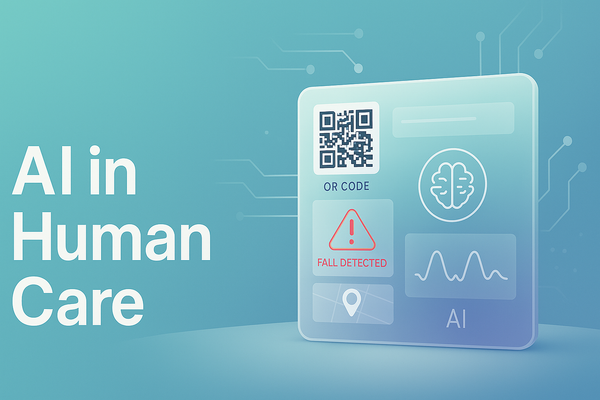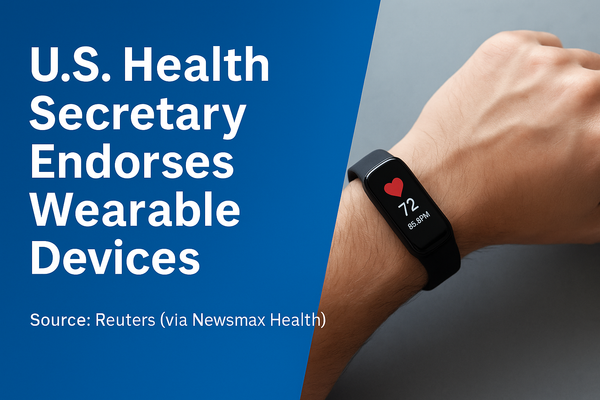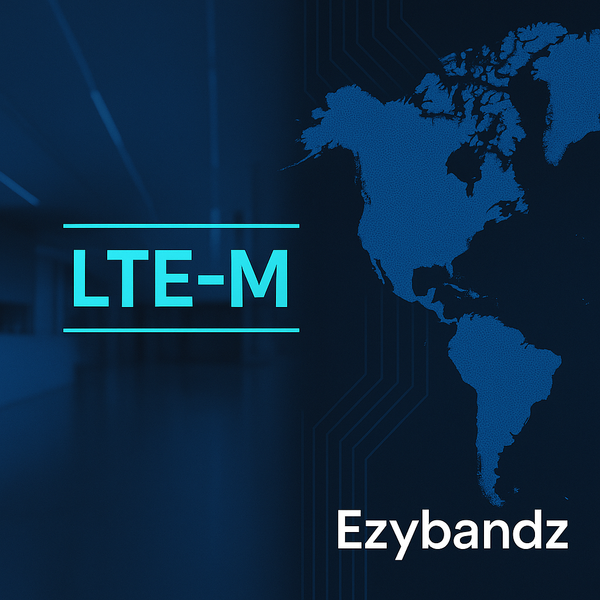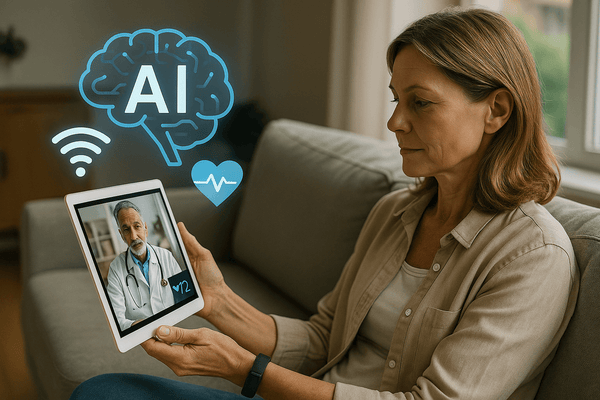In today’s world of wearable gadgets, you might wonder: “Why get a dedicated medical alert bracelet when I already have a smartwatch that can do so much?” It’s a great question. Devices like the Apple Watch or Samsung Galaxy Watch have introduced features like fall detection and emergency SOS calling, blurring the lines between general wearables and specialized personal safety devices. Yet, there are crucial differences. If you or a loved one are concerned primarily about health monitoring and emergency alerts – for example, for an elder, someone with a medical condition, or even for yourself during high-risk activities – you need to know which option is more reliable when it truly counts. In this comparison, we’ll break down medical alert bracelets vs. smartwatches in terms of safety functionality, reliability, ease of use, and overall benefits for peace of mind. By the end, you’ll see why a focused device like the Ezybandz GuardianOne medical alert bracelet often comes out on top for personal safety, especially in emergencies, whereas multi-purpose smartwatches might fall short in critical moments.
Safety Features: Dedicated vs. Multi-Purpose
A modern medical alert bracelet is purpose-built for emergencies. Its core features typically include:
-
Automatic Fall Detection: High-sensitivity sensors trigger an alert if you take a hard fall.
-
SOS Button: A clearly marked emergency button that instantly summons help (either connects to 911/ambulance or alerts preset contacts).
-
GPS Locator: So responders or family can find where you are when you call for help.
-
24/7 Monitoring (optional): Many come with subscription services where a live operator will respond and coordinate help when an alert comes in.
-
Medical Information Access: Some store or transmit your medical info (allergies, conditions) to first responders.
In contrast, a smartwatch (like Apple or Android watches) is a jack-of-all-trades. Safety is one of many features, which might include:
-
Fitness tracking, notifications, apps, music control, etc.
-
An SOS or emergency call feature (e.g., Apple Watch can call 911 if you hold a side button).
-
Fall detection in some models (Apple Watch has it for hard falls, and will call if you don’t respond in 1 minute).
-
Possibly location sharing (through connected phone apps or if the watch has its own cellular).
-
No dedicated health profile sharing (beyond maybe a Medical ID on your phone).
Reliability in Emergencies: Here’s where differences emerge. In an emergency scenario – say you’ve fainted or had a car accident – a medical alert bracelet’s whole job is to get help, whereas a smartwatch may or may not succeed:
-
Battery Life: Medical alert devices are designed to last days or weeks on a charge since they have limited functions. Ezybandz, for instance, has a long-lasting battery so it’s ready when needed. Smartwatches typically last 18-36 hours between charges (often you have to charge nightly). If you forget to charge your smartwatch and it dies, it’s not going to help in an emergency. This is a huge consideration for seniors who might not adhere to daily charging routines.
-
Always-On Connection: Many medical alert bracelets have built-in cellular connectivity and don’t depend on a smartphone. They are standalone – press the button and they directly call out over the cellular network or send a signal to a base unit. Some even work anywhere globally with GPS. A standard smartwatch might require your smartphone nearby (Bluetooth connection) to relay the emergency call, unless you have a cellular watch model (which costs extra and still usually needs a tethered phone for setup). If the phone isn’t present (say you fell in the garden without your phone in pocket), the smartwatch could be a fancy paperweight in terms of calling for help.
-
Simplicity Under Stress: Picture an elderly person or someone in a panic – fiddling with a touchscreen or small icons on a smartwatch can be challenging. Medical bracelets have a single, obvious button. Press and hold, and it’s done. With an Apple Watch, for example, you need to press and hold the side button and then swipe the Emergency SOS slider on the screen (unless you have auto-call enabled, which still requires holding the button for a certain duration). It’s not super complicated, but it’s not as foolproof as a one-press physical button. Additionally, the person needs to remember how to do it, whereas a red “HELP” button is intuitive.
-
Fewer False Alarms vs. More Sensitivity: A dedicated device often has refined fall-detection tuned to medical use. Smartwatches have gotten pretty good (Apple’s fall detection has been praised and had success cases), but they may not detect all types of falls or conversely, may trigger false alarms from, say, dropping the watch or doing a vigorous plop on the couch. Medical alert devices can be calibrated to minimize false alarms (and often you have an operator who will verify if it’s a real emergency when they call you). With an Apple Watch, if it thinks you fell and you don’t respond in 60 seconds, it auto-calls 911 which is good unless the watch fell off the table and you’re fine but now emergency services are summoned inadvertently.
-
Monitoring Service Advantage: When a medical alert bracelet triggers, many systems connect you to a live operator who speaks through the device (“Hello, do you need help?”). They can then call an ambulance and notify your family and stay on the line until help arrives. With a smartwatch calling 911, you’ll speak to a 911 dispatcher directly (if you’re able to speak), but there’s no personal health info on file, and no one is going to call your family for you. Some advanced services/apps on smartphones might do contact alerts, but it’s not as integrated.
Ease of Use for Target Users: A big factor is who is using it. For a tech-savvy individual in their 30s, an Apple Watch might be manageable. But consider a 80-year-old grandparent or someone with vision issues or hand tremors:
-
Learning Curve: Smartwatches can be overwhelming – tiny icons, swipes, apps. A medical alert bracelet is basically “wear it and forget it until needed.” Very minimal training required – perhaps just testing the button monthly.
-
Maintenance: Again, charging and updates. Smartwatches get software updates that need installing, they might need pairing to new phones, etc. A dedicated device is usually much more “set-and-forget.” As long as it’s charged or on its charging dock, it’s good to go. Some come with docking stations that double as home base units (for home range).
-
Durability: Medical alert wearables tend to be sturdier for 24/7 wear (they better be, since you’re supposed to wear it even in shower and bed). Many smartwatches are water-resistant, yes, but some people don’t wear them to sleep or shower because of comfort or fear of damage. If it’s not on you, it can’t help you. A light, comfortable medical bracelet is designed for continuous wear, including being waterproof for bathing (where many accidents happen).
-
Style and Social Factors: Now, one could argue a sleek smartwatch is more stylish than a medical alert bracelet that might carry a stigma of “old person device.” However, companies like Ezybandz have made their bracelets modern-looking ezybandz.com. They don’t scream “medical alert” – they look like a fitness band or watch. On the other hand, an elderly person might find a high-tech looking Apple Watch unfamiliar or worry about it being too expensive/fragile to wear everywhere. It’s a trade-off. For some, blending in as a normal watch is important; for others, a dedicated vibe is fine. (We’ve found many seniors actually like that their medical alert doesn’t have distracting screens or alerts other than for emergencies – it’s straightforward.)
Functionality Beyond Emergencies: Smartwatches obviously do a lot – heart rate tracking, ECG readings, step counting, messaging, etc. Some of these can be health-useful. For instance, an Apple Watch can alert to irregular heart rhythms or if your heart rate is too low or high at rest. That could give early warning of issues. A medical alert bracelet typically doesn’t monitor those things continuously (at least not the simpler ones). So if you want daily fitness data and smartphone features and some safety, a smartwatch is more of a Swiss Army knife.
However, ask yourself: will those extra features be used by the person wearing it? If it’s for an older adult who won’t really manage apps or care about step count, then those features aren’t value – they’re clutter. Instead, the simplicity of a dedicated device is a boon. Also, sometimes less tech = fewer points of failure. (An anecdotal example: a senior with an Apple Watch might accidentally dismiss a fall alert pop-up because they didn’t understand it, whereas a medical alert device would have just acted.)
That said, it’s not an either/or for some folks. Some users wear both – but that’s redundant for most. So it comes down to priorities.
Cost Considerations: Up front, smartwatches can cost $250–$500 (plus potentially $10-$20/month for cellular service if you go that route). A medical alert bracelet device might cost around $200, and then often a subscription of $20-$40/month for the monitoring service/cellular. Over time, a smartwatch could be cheaper if you don’t use cellular or monitoring services. But consider:
-
If you forego the monitoring service with a medical alert (some devices can alert family only with no monthly fee beyond cell SIM costs), then it’s just the device cost and maybe a minor cellular plan for it.
-
On the flip side, if you want a smartwatch to work standalone (without a phone), you’ll need to pay monthly for its eSIM line anyway.
-
There are also peace of mind value factors: knowing a pro is on call 24/7 with the dedicated device can be worth the fee for many families (especially those worrying about an elder).
The National Council on Aging notes that most insurance (Medicare etc.) doesn’t cover medical alerts, but the VA often does for veterans ncoa.org. Some smartwatches are being explored in healthcare too, but at the moment, a medical alert system is more likely to be recommended by doctors for high-risk patients simply because of its reliability and focus.
Real-World Experiences: Medical Guardian (a leading alert company) pointed out that many customers who initially try using a cell phone or smartwatch in lieu of a medical alert end up switching to a dedicated system after an incident or close call. For instance, an older gentleman relied on his smartphone to call 911 if needed, but when he fell, the phone was in the other room out of reach. Post-incident, he got a wearable pendant which he now wears at all times. Similarly, a tech-savvy senior tried Apple Watch for fall detection but found it too complicated to manage daily, so she opted for a simpler pendant with automatic fall detect and had fewer worries.
Smartwatches have indeed saved lives in some cases Apple often shares stories of 911 being called for unconscious users or severe falls. These are fantastic outcomes, showing the feature works. However, it’s also notable that those successes often involve relatively younger users (hikers, drivers, etc.) or are luck-of-the-draw if the watch was charged and in cellular range. Medical alert devices have countless save stories too, typically among older adults: e.g., a woman with a stroke pressed her pendant and got EMS quickly, avoiding worse damage.
Bottom Line – Which Should You Choose?
Choose a Medical Alert Bracelet if:
-
The user is an older adult, someone with serious health conditions, or anyone who values simplicity and reliability in emergencies over gadget features.
-
You want a device that is “on” 24/7 with minimal maintenance and is specifically tuned to respond to emergencies with no fuss.
-
Having a professional monitoring service or immediate family alerts is important.
-
You’re concerned about situations where a smartphone/watch might not be accessible (shower, phone in another room, etc.).
-
Peace of mind is priority: you don’t mind a monthly fee for a dedicated safety service that is always there.
Choose a Smartwatch for safety if:
-
The user (could be you) is in relatively good health and tech-comfortable, wanting a device that does lots of things (fitness, communication) in addition to basic safety.
-
You’re okay with managing battery charging daily and possibly wearing it only during certain hours (e.g., not overnight).
-
The idea of speaking to 911 directly through the watch (instead of a monitoring center) is fine, and you don’t need the extra hand-holding of a call center.
-
You already own one and just want to enable its safety features (e.g., ensure fall detection is on, and emergency contacts are set in the phone Health app for Medical ID).
For many, the ideal might actually be both: Some caregivers encourage seniors to wear a medical alert device for serious backup, and use a simple fitness band for activity tracking separately. However, wearing multiple devices can be clunky and confusing.
If forced to pick for an at-risk individual, the medical alert bracelet wins for personal safety. It’s purpose-built to save lives and reduce response times. When you’re dealing with something as critical as a heart attack or a fall, you want the device that’s most likely to work in that moment. A study cited by Healthline found that while alert system users had similar hospital times as non-users (meaning emergencies still happened), they felt safer and more confident to be active with the device healthline.com. That psychological benefit is huge – and you only get it if you trust the device’s reliability. With a dedicated medical alert, you can trust it with your life (quite literally).
Conclusion: Smartwatches are amazing gadgets and can contribute to safety, but if your primary goal is personal emergency preparedness, a medical alert bracelet is like having a dedicated guardian on your wrist. It doesn’t distract you with texts or calories burned; it simply stands by silently until you need help, then springs into action. For older adults, those with health issues, or anyone who wants a streamlined lifeline, the medical alert bracelet is better tailored for the job no smartphone required, no complex interface, just push a button and get help. Meanwhile, a smartwatch is a good supplemental device for general wellness with a nice side benefit of emergency features, but it might not be as foolproof when the chips are down.
In the end, the choice comes down to personal needs. If you’re tech-savvy, you might leverage your smartwatch for that added layer of safety. But for comprehensive, reliable protection, you can’t beat the peace of mind offered by a purpose-built medical alert system like Ezybandz. It’s one of those devices you hope you’ll never need – but if you do, you’ll be grateful it’s there, optimized to do one thing and do it well: save your life.
Research References: Dedicated medical alert systems are designed to quickly connect users to help at the push of a button theseniorlist.comtheseniorlist.com, and many include automatic fall detection and GPS location which send aid to the exact spot of an emergency health.harvard.edu. Smartwatches (e.g., Apple Watch) have introduced fall detection and SOS features, which have been documented to initiate emergency calls in some cases ncoa.org, but they rely on the user wearing and maintaining the device properly. Studies indicate that users of medical alert devices feel safer and more confident living independently healthline.comhealthline.com. However, insurance coverage for medical alerts is limited – Medicare doesn’t cover them, though some Medicare Advantage or VA programs do ncoa.org – so choosing the right device is an investment in safety. Ultimately, while both smartwatches and medical alert bracelets can call for help, the latter is purpose-built for reliability in crises (long battery life, simple activation, professional monitoring), making it the preferred choice for individuals at higher risk when every second counts.












